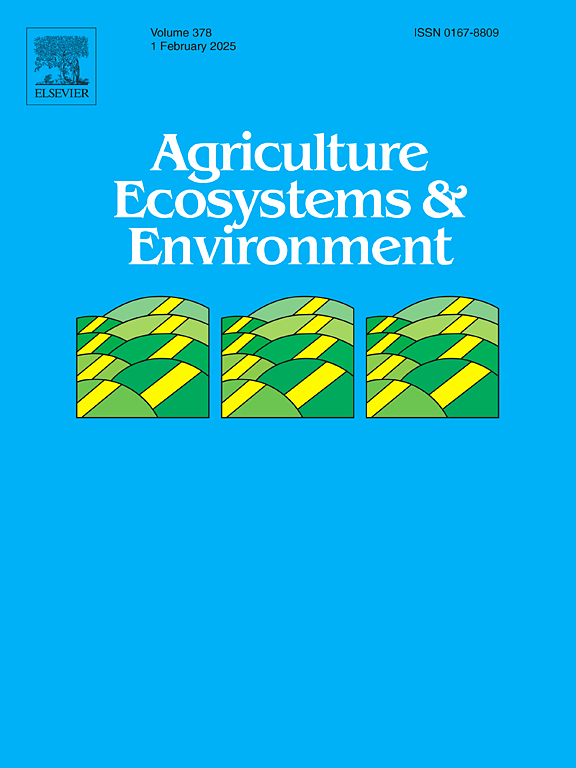Soil health responses to long-term grazing intensity gradients in two semiarid rangelands
IF 6
1区 农林科学
Q1 AGRICULTURE, MULTIDISCIPLINARY
引用次数: 0
Abstract
Semiarid rangelands constitute nearly 30 % of the world’s grassland ecosystems and livestock grazing is the most widespread land use in these ecosystems. These semiarid rangelands provide a variety of ecosystem goods and services, many of which may depend on soil health. While advances have been made with indicators of soil health for croplands, similar efforts for rangelands are lacking. The North American Project to Evaluate Soil Health Measurements (NAPESHM) sampled soils to 15 cm from long-term (≥ 40 years) grazing treatments spanning a range of grazing intensity (ungrazed to heavy grazing) in two semiarid rangelands, shortgrass steppe (SGS) and northern mixed-grass prairie (NMP), in fall 2019. Soils were analyzed for chemical (permanganate oxidizable carbon [POXC] and soil organic carbon [SOC]), biological (mineralizable soil carbon [MinC], phospholipid fatty acids [PLFA], ACE protein, and β-glucosidase enzyme activity [BG]), and physical (saturated hydraulic conductivity [SHC], available water capacity [AWC], and aggregate stability) indicators of soil health. Light particulate organic carbon and mineral associated organic carbon fractions were also analyzed at the SGS. Additionally, annual net primary productivity and the relative production of warm-vs cool-season grasses were evaluated from 2010 to 2019. Soil health responses to grazing intensity treatments in these two semiarid rangeland ecosystems were generally inconsistent across and within chemical, biological, and physical indicators. For instance, POXC and SOC differed between the two rangeland ecosystems, but neither soil health response within a site was significantly affected by grazing intensity. MinC and saturated hydraulic conductivity consistently decreased as grazing intensity increased in both rangeland ecosystems, while all other biological and chemical indicators were either 1) solely influenced by rangeland ecosystem type, 2) the interaction between rangeland ecosystem and grazing intensity, or 3) unaffected by rangeland ecosystem or grazing intensity. At SGS, δ13 C values of both organic carbon fractions became less negative as grazing intensity increased, consistent with a greater proportion of warm-season perennial grasses and lower proportion of cool-season grasses. Our results suggest that generalizations about the effects of multi-decadal grazing intensity gradients in western Great Plains semiarid rangelands in North America on chemical, biological, and physical indicators of soil health remain elusive.
求助全文
约1分钟内获得全文
求助全文
来源期刊

Agriculture, Ecosystems & Environment
环境科学-环境科学
CiteScore
11.70
自引率
9.10%
发文量
392
审稿时长
26 days
期刊介绍:
Agriculture, Ecosystems and Environment publishes scientific articles dealing with the interface between agroecosystems and the natural environment, specifically how agriculture influences the environment and how changes in that environment impact agroecosystems. Preference is given to papers from experimental and observational research at the field, system or landscape level, from studies that enhance our understanding of processes using data-based biophysical modelling, and papers that bridge scientific disciplines and integrate knowledge. All papers should be placed in an international or wide comparative context.
 求助内容:
求助内容: 应助结果提醒方式:
应助结果提醒方式:


